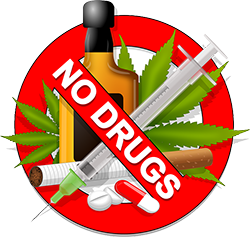 About three in four drug or alcohol abusers have jobs – and they don’t leave their problems at the door when they arrive at work! According to OSHA, an effective drug-free workplace program should have five components:
About three in four drug or alcohol abusers have jobs – and they don’t leave their problems at the door when they arrive at work! According to OSHA, an effective drug-free workplace program should have five components:
A Drug-Free Workplace Policy. Your policy should include a stated purpose or rationale, a clear description of prohibited behaviors, and an explanation of the consequences of violating the policy Supervisor Training. Have your supervisors trained in understanding the policy and its implications, recognizing and dealing with employees who have substance-related performance problems, and referring these employees to available assistance. Make supervisors responsible for monitoring employee performance, staying alert to performance problems, and enforcing the policy.
Employee Education.
Effective education addresses company-specific details about the policy and program, together with general information about the nature of substance abuse; its impact on work, health, and personal life; and types of available assistance. You can provide education through safety meetings and training sessions, home mailings, workplace displays, brown-bag lunches, guest speakers, seminars, and new-hire orientation sessions.
Workplace Assistance.
Employee Assistance Programs (EAPs) offer an alternative to dismissal and minimize the employer’s legal vulnerability by demonstrating efforts to support substance-abusing workers who need help. EAPs provide counseling and referrals, plus other services such as supervisor training and employee education. If you don’t offer these services, maintain a resource file from which employees can access information about community-based resources, treatment programs, and help lines
Drug Testing.
The most common test is urinalysis. Other types are the breath-alcohol test, blood test, hair analysis, and saliva or sweat tests. Reasons for testing include pre-employment screenings, reasonable suspicions of use, post-accident, return-to-duty, random, and periodic tests. Private employers have latitude in implementing testing, unless they’re subject to federal regulations (for example, the U.S. Department of
Transportation drug-testing rules for employees in safety-sensitive situations). Many employers use testing guidelines by the Substance Abuse and Mental Health Services Administration (SAMHSA). Finally, bear in mind that creating and implementing a successful drug-testing program takes time and patience!





